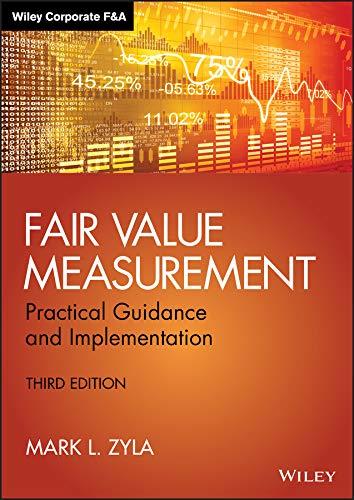LeDorVaDor
ToAnna,Paola,andAnna
AsIthinkoftheindividualswhoparticipatedinthisbook,Iwouldliketorecallthreepeople whoarenotwithustoday,butwhoarepresentinitspages:myfather,CarloPuca,who introducedmetotheworldoffinanceonthefloorofthestockexchangeinNaples,Italy; FrancescoLucarelli,whohelpedmefindmywayasastudentofEconomicsandFinanceat theUniversityFedericoIIofNaples;andMortonKenner,whowelcomedmeinNewYork andintroducedmetotheworldofprivateinvestmentfundsintheearly1990s.Iwould alsoliketothankthefriends,mentors,andcolleagueswhohaveaccompaniedmeinmy professionaljourneyandhavehelpedshapethecontentofthisbook.Iespeciallythank,in orderofacquaintance,MariaTeresaDellaCioppa,MassimoMarrelli,ToddGoldman,David Sung,JeffreySchwartz,DavidKaufman,JacquesGagné,JohnBudzyna,andJeffYagerfor theirguidanceovertheyears.
Inwritingthisbook,ithasbeenaprivilegetocollaboratewithNeilBeaton,Alexander Davie,AndreasDalSanto,JohnJackman,andMarkZylaascontributorsandco-authorsof somechapters.Iwishtoexpressmygratitudetothefriendsandcolleagueswhohavereadand sharedtheirviewsonselectedchapters,andwhoseperspectiveshelpedinformmyunderstandingofkeyissuesaroundthetopicofthisbook,includingWilliamBareiss,MarkBhasin,Keith Black,MelissaBrady,RichCarson,ShilpaChandra,ChanduChilakapati,RaffaeleCicala, AthanDemakos,DavidDufendach,AndyDzamba,ErikEdson,DarrinErickson,Davide Erro,AlfredoGallone,JonathanGrubbs,MariaHall,SidneyHardee,BrettHickey,Tom Kehoe,RahulKeshap,GunesKulaligil,LorreJay,SteveJugan,VincentLaRosa,PaulMcCaffrey,AndrewMetrick,ElviraPasseggio,BrunoPinto,JerryPinto,RayRath,SindhuRajesh, LorenzoRestagno,MichaelRose,ToddRosen,EnricoRovere,JohnSawyer,GregSiegel, PaoloSiniscalco,MarkSmith,ChristineSong,KrisThiessen,HeidiMorrow,BillTrent,Laura Yunger,JaredWaters,MichaelWeinberg,andmyhusband,AlexanderGamburd.Ialsowould liketothankAswathDamodaran,whosepublishedworkhasbeenespeciallyinfluentialin certainareasofmyanalysisandinthatofmanyothers.IthankSheckCho,ElishaBenjamin, BeulaJaculinandtheproductionteamatWileyfortheirsupportduringtheproductionof thisbook.
Thisbookisdedicatedtomydaughter,AnnaGamburd,mymother,PaolaLeosini,and mygrandmother,AnnaLeosini,aseverydaysourcesofwisdom,inspiration,andstrength.
AntonellaPuca, CFA,CPA/ABV,CEIV, isaseniordirectorwithAlvarez&Marsal ValuationServicesLLCinNewYork.Shespecializesinthevaluationofprivateequity andventure-backedcompaniesforfinancialandtaxreporting,M&Atransactions,buy-sell agreements,estateplanning,andlitigationpurposes.Priortothat,Antonellahasbeenpart ofthealternativeinvestmentgroupatKPMG/RothsteinKass,whereshehelpedlaunchRK’s Bayareapractice,theglobalinvestmentfundpracticeofEYinSanFranciscoandNew York,thefinancialservicesteamatRSMUS,andthevaluationteamatBlueValGroupin NewYork.
AntonellaiscurrentlyservingontheBusinessValuationCommitteeoftheAICPAandas aconsultantontheCFAcertificationteam.ShehasservedasamemberofAIMA’sresearch committeeandasadirectoroftheboardandtreasureroftheCFASocietyofNewYork.She hasservedatCFAInstituteasaconsultantintheareaofpracticeanalysisandcurriculum review,andasadirectorintheGIPS,ethics,andprofessionalstandardsgroup.Sheiscurrently servingasaboardmemberandtreasurerofSnehacaresInc.,anonprofitorganizationthat sheco-foundedin2015dedicatedtoassistchildrenwithHIVAIDSinBangalore,India.
Sheisafrequentpresenterandauthoronvaluationandalternativeinvestmenttopics. SheholdstheCFAcharterandislicensedasaCPAinCaliforniaandNewYork.Antonella holdstheCertificateinEntityandIntangiblesValuation(CEIV)andisaccreditedinbusiness valuationbytheAICPA.
Antonellagraduatedineconomics,withhonors,attheUniversityFedericoIIofNaples, Italy,withathesisinpublicfinance,andhasamasteroflawstudiesfromNYUSchoolof Law.ShehasbeenaresearchfellowattheHebrewUniversityofJerusalemandhasheldthe Italiannationaltitleinthe420sailingclassforCircolodelRemoedellaVelaItalia.
NeilJ.Beaton,CPA/ABV/CFF,CFA,ASA, isamanagingdirectorwithAlvarez&Marsal ValuationServices,LLC.Mr.Beatonspecializesinthevaluationofpublicandprivately heldbusinessesandintangibleassetsforpurposesoflitigation,acquisitions,sales,buy-sell agreements,ESOPs,incentivestockoptions,andestateplanningandtaxation.Heearned abachelor’sdegreeineconomicsfromStanfordUniversityandamaster’sdegreeinfinance fromNationalUniversity.Heisacertifiedpublicaccountant(CPA),charteredfinancialanalyst(CFA),andaccreditedseniorappraiser(ASA).Additionally,heisaccreditedinbusiness valuation(ABV)andcertifiedinfinancialforensics(CFF).Mr.Beatonisafrequentlecturer atuniversities,isaninstructorforvariousbusinessvaluationcourses,andspeaksnationally onbusinessvaluationwithaspecialemphasisonearlystageandhigh-technologycompanies. Hehaswrittentwobooksonearlystagecompanyvaluation,hascontributedtochapters foranumberofotherbooksonvaluationanddamagesissues,andhaswrittennumerous articlesonthesetopics.Heisaformerco-chairoftheAICPA’sValuationofPrivateEquity SecuritiesTaskForce,andaformermemberoftheAICPA’sABVExamCommitteeand theAICPA’sMergers&AcquisitionsDisputesTaskForce.Heiscurrentlyamemberofthe BusinessValuationUpdate editorialadvisoryboard,amemberoftheboardofexpertsfor thepublication FinancialValuationandLitigationExpert,andontheeditorialboardofthe NationalAssociationofCertifiedValuationAnalysts’ ValueExaminer. AndreasDalSanto,CFA, isamanagingdirectorwithBlueValGroup,LLC.Mr.Dal Santospecializesinthevaluationoftechnologycompaniesanddiversifiedbusinessesforpurposesoffinancialreporting,M&Atransactions,andbusinesssales,partnershipbuyoutsand buy-sellagreements,IRC409A,andestateandgifttaxes.Heearnedamaster’sdegreeineconomicsandfinancewithdistinctionfromCa’FoscariUniversity,Venice,Italy,andhastaken courseworkattheMassachusettsInstituteofTechnologyFutureofCommerce.Heisacharteredfinancialanalyst(CFA),accreditedinbusinessvaluation(ABV)andholdsanadvanced riskandportfoliomanagement(ARPM)certificate.Mr.DalSantohasmorethan20yearsof experienceininvestments,businessvaluation,andmanagementconsulting.PriortoBlueVal, hehasmanagedmorethan$1billioninEuropean,NorthAmerican,andEmergingMarketassetsforArcaFondi,aleadinginvestmentmanagementfirmbasedinMilan.Ashead ofglobalemergingmarketsforArcaFondi,hehasgainedexperienceinbusinessmodeling andvaluationinabroadrangeofsecuritiesinavarietyofsectorsacrossdifferentcountries andmarkets.PriortothathewasaspecialistinNorthAmericanTech,Media,andTelecom investmentsforArcaFondi.Hehasservedasadirectorontheboardsofprivatecompanies andnonprofitorganizations,includingtheCFASocietyNewYorkandtheCFASocietyItaly. AlexanderDavie isamemberintheNashville,Tennessee,lawfirmRiggsDaviePLC. Heworksextensivelywithtechnologycompanies,includingstartupsandemerginggrowth companies,aswellasbusinessesinotherindustries,providinglegalcounseloncompany formation,businessplanning,mergersandacquisitions,technologytransactions,corporate
governance,debtandequityfinancings,andsecuritiesofferings.Inaddition,Mr.Davie representsinvestmentadvisors,securitiesbrokers,hedgefunds,privateequityfunds,and realestatepartnershipsyndicatorsinnumerousprivateofferingsofsecuritiesandinongoing compliance.
Mr.Daviehasexperienceservingontheboardsofanumberofcivicorganizations, includingtheNashvilleBusinessIncubationCenter.HeisalsoactiveintheTennesseeBar Association,servingontheexecutivecounselofitsbusinesslawsection.
Mr.DaviereceivedhisbachelorofartsdegreeineconomicsfromtheUniversityof Pennsylvania,graduatingmagnacumlaudeandhisJurisDoctordegreefromDukeUniversity SchoolofLaw,graduatingwithhighhonors.Whileinlawschool,heservedasthemanaging editorofthe DukeLaw&TechnologyReview.Inaddition,hereceivedamasterofeducation degreeinorganizationalleadershipfromPeabodyCollegeatVanderbiltUniversity.
JohnJackman,CFA, isthepresidentandmanagingdirectorofCortlandValuationGroup. HechairsCortland’soversightcommitteeforthefirm’svaluationtechnicalstandardsand playsanactiveroleinworkingcloselywithclients,providingauthoritativeoversighttothe valuationengagementleaders.
Hehas20yearsofexperienceinthevaluationindustry,providingvaluationandfinancialconsultingservicesworldwideforthepurposesoffinancialreporting,taxplanningand compliance,financing,bankruptcy,litigation,mergersandacquisitions,restructuringand recapitalizations,leveragedbuyouts,privateequityandinvestment.
Heisanexpertinfinancialreportingrequirements,includingfreshstartaccounting, ASC805,BusinessCombinations;ASC350,Intangibles—GoodwillandOther;ASC360, Property,PlantandEquipment;andASC718,Compensation—StockCompensation.Hehas particularexpertiseinthevaluationofintellectualpropertyandintangibleassetsandregularlyperformsvaluationsand/orarm’s-lengthroyaltyrate/transferpriceanalysesrelatedto intangibleassets.Hehasbeenaco-leaderofateamhiredasthedesignatedexpertonbehalf oftheUnitedStatesInternalRevenueServiceintheareaofintellectualpropertyvaluation.
Mr.Jackmanhasin-depthexperiencewiththevaluationreviewprocesswithnationaland regionalaccountingfirmsthroughouttheUnitedStatesandhasworkedcloselywithinternationalfirmsundertheIFRSfinancialstandards.Healsoperformsin-depthauditreviews ofthird-partyvaluationworkproductonbehalfofvariousaccountingfirms.Additionally, heremainscurrentwithindustrystandardsandbestpracticesbyactivelyparticipatingin conferencesthroughoutthecountry.Hehasbeenaformalspeakerandpresentertomany organizationsandprofessionalgroupsontopicsrangingfromvaluationinthecontextof licensingtointellectualpropertyandeconomiclives,toenterprisevalueandsteady-state analysis.Healsodevelopsanddeliversin-housevaluationtrainingprogramstoselectclients.
PriortoCortland,hewaschairmanandmanagingdirectoroftheWindwardGroup, Inc.,whichmergedwithCortlandinJanuaryof2014.PrecedingTWG,hewasthemanaging director-valuationsofCovePartnersLLC,aboutiqueinvestmentbankingfirminSanDiego, California;andthevicepresidentofCaliberAdvisors,Inc.,wherehewastheheadofthe financialreportinggroup.HepreviouslyheldpositionswithNavigantCapitalAdvisorsand KrollZolfoCooper.
MarkL.Zyla isamanagingdirectorofZylaValuationAdvisors,LLC,anAtlanta, Georgiabasedvaluationandlitigationconsultancyfirm.HereceivedaBBAdegreeinfinance fromtheUniversityofTexasatAustinandanMBAdegreewithaconcentrationinfinance fromGeorgiaStateUniversity.HealsocompletedtheMergersandAcquisitionsProgram attheArestyInstituteoftheWhartonSchooloftheUniversityofPennsylvaniaandthe
ValuationProgramattheGraduateSchoolofBusinessatHarvardUniversity.Heisacertifiedpublicaccountant,accreditedinbusinessvaluation(CPA/ABV),certifiedinfinancial forensics(CFF)bytheAmericanInstituteofCertifiedPublicAccountants(AICPA),acertifiedfinancialanalyst(CFA),andanaccreditedseniorappraiserwiththeAmericanSocietyof AppraiserscertifiedinBusinessValuation(ASA).
Mr.ZylaisthechairmanoftheStandardsReviewBoardoftheInternationalValuation StandardsCouncil(IVSC).HerecentlyservedontheAICPA’sForensicandValuationServices ExecutiveCommittee.HeisamemberoftheBusinessValuationsCommitteeoftheASA wherehealsoservesasamemberoftheBusinessValuationStandardsandTechnicalIssues subcommittees.Mr.ZylaisontheAdvisoryCounciloftheMasterofScienceinfinance programattheUniversityofTexasatAustin.In2013,hewasinductedintotheAICPA BusinessValuationHallofFame.
Heisafrequentpresenterandauthoronvaluationissues.Hehasservedonthefaculty oftheFederalJudicialCenterandtheNationalJudicialCollegeteachingbusinessvaluation conceptstojudges.Heisauthorof FairValueMeasurement:PracticalGuidanceandImplementation,3rded.,publishedbyJohnWiley&Sons(2019).Mr.Zylaisalsotheauthor ofthecourse“FairValueAccounting:ACriticalNewSkillforAllCPAs”publishedbythe AICPA.Heisalsoco-authorofseveralportfoliosrelatedtofairvaluemeasurementpublished byBloombergBNA.
Introduction
EarlyStageValuation coversabroadrangeofvaluationmethodsthatreflectthevarietyof earlystageenterprises(ESEs),fromentitiesthatmayhavejuststartedoperationstocompanies thathavesubstantialrevenueandhavealreadygonethroughmultipleroundsofventurecapitalfinancing.ArecurringmessagethroughoutthisbookisthattheapproachtoESEvaluation needstofollowthecompany’sevolutionandadapttoreflectthecompany’scharacteristicsat eachstageofdevelopment.Thestructureofthisbookconsistsofthreeparts:
PartOne:EarlyStageValuationinContext laysthefoundationforESEvaluationunder thefairvaluestandardanddescribesthemaincharacteristicsofESEs,includingtheirmarket andcapitalstructure.
Chapter 1:EarlyStageEnterprisesandtheVentureCapitalMarket introducesthedefinitionofESEandprovidesanoverviewofthecapitalmarketsinwhichESEsoperate.This chapterconsiderstheobjectivesandtargetreturnsofventurecapitalinvestorsandhowthey reconciletothehistoricalreturnsrealizedbyESEinvestments.Wediscusshowtheventure capitalmarkethasevolvedoverthepastdecade.WeidentifyrecenttrendsinESEexitstrategiesandvaluation,consideringdataonM&Atransactions,buyouts,andIPOsoverthepast decade.
Chapter 2:FairValueStandard presentsthefairvaluestandardforfinancialreportingas definedinFinancialAccountingStandardsBoard,AccountingStandardsCodification820, FairValueMeasurement (ASC820)andInternationalAccountingStandardsBoard,InternationalFinancialReportingStandards13, FairValueMeasurement (IFRS13).Weprovidea historicaloverviewonthedevelopmentofthefairvalueconcept,fromthemedievaldebateon the“fairprice”(justumpraetium)inFranciscanandScholastictheologythroughthewritings ofAlfredMarshall,theRailroadRateregulationofthe1890s–1910s,andtheinterpretation offairvalueinthewakeofpost–WorldWarIIeconomicliberalism.
Wethenexaminethefairvaluedefinitionforfinancialreportingundergenerallyaccepted accountingprinciples(GAAP)andillustratetheincome,market,andasset-basedvaluation approachesunderASC820/IFRS13astheyapplytoESEs.
Thelastpartofthischapterreviewssomekeyreferencematerialthatweuseinouranalysis,withanemphasisonthemostrecentguidanceonfairvalueimplementation,including:
■ AmericanInstituteofCertifiedPublicAccountantsAccountingandValuationGuideon the ValuationofPortfolioCompanyInvestmentsofVentureCapitalandPrivateEquity FundsandOtherInvestmentCompanies (the“AICPAPE/VCValuationGuide”)
■ InternationalValuationStandards(IVS)210, IntangibleAssets andIVS500, Financial Instruments,latestedition.
■ InternationalPrivateEquityandVentureCapitalValuationGuidelines:latestedition(the “IPEVGuidelines”)
■ AppraisalFoundation:VFRValuationAdvisory#4, ValuationofContingentConsideration (“VFR#4”)
■ AlternativeInvestmentManagementAssociation: GuidetoSoundPracticesfortheValuationofInvestments (2018).
■ FinancialInstrumentsPerformanceFramework(FIFP)fortheCertifiedintheValuation ofFinancialInstruments(CVFI)Credential
■ MandatoryPerformanceFrameworkfortheCertifiedinEntityandIntangibleValuations (CEIV)CredentialandApplicationoftheMandatoryPerformanceFrameworkforthe CEIVCredential(collectivelytheMPF)
WealsoincludesomelessrecentsourcesthatarealsorelevantforESEvaluationandthat wehaveusedinvariouschaptersofthisbook.Morereferencescanbefoundinourselected Referencesectionattheendofthebook.
Chapter 3:CapitalStructure discussesthecapitalstructureofESEs,whichareoften complexstructureswithmultipleclassesandseriesofsecurities.Weconsiderthemost commonfeaturesofcommonstock,preferredstock,options,andoption-likeinstruments, debtandhybridinstrumentssuchassimpleagreementsforfutureequity(SAFE)and keepitsimplesecurities(KISS).Wediscusseconomicrightsofpreferredstock,including liquidation,antidilution,participation,conversion,dividendandredemptionrights,as wellasnoneconomicrightssuchasregistration,voting,boardcomposition,dragalong, preemptive,firstrefusal,tag-along,managementandinformationrights.Weprovidepracticalexamplesofantidilutionprovisionsandvarioustypesofliquidationpreferencesand insightsintohowtheserightsmayplayoutinvaluationdependingonthecompany’sexit strategy.
PartTwo:EnterpriseValuation illustratesthevaluationofanESEatthelevelofthe overallenterprise.MostESEsdonothavedebtintheircapitalstructureorhavedebtwith equityfeatures(convertibledebt).Inthiscontext,theenterprisevalueofthefirmwillcoincide withitsequityvalue.
Chapter 4:SeedStageValuationandtheVentureCapitalMethod presentsanoverview ofvaluationofESEsintheirinitialstagesuptotheirSeriesAfundingwithventurecapital financing.
Wereviewthemarketforseedinvestingandtherolethatangelinvestorsplayinprovidingseedcapital.Weintroducetheconceptsofpremoneyandpostmoneyvaluationand provideexamplesofhowpostmoneyvaluationisaffectedbyacompany’scapitalstructure. Weillustratehowan“up”roundwherethepostmoneyvaluationofacompanyincreasesmay actuallybea“down”roundfromtheperspectiveofanindividualinvestorwhoseinteresthas beendilutedbytheadditionofnewinvestorsintothecompany.
Wewalkthroughsomeofthescorecardmethodologiesthatareusedintheearlieststages ofseedinvesting,includingthePayneScorecard,theRiskFactorSummationModel,the Berkusmethod,andtheModifiedBerkusmethod.Mostofthechapterisdedicatedtothe VentureCapital(VC)method,whichisacommonapproachtovaluationfornegotiatingnew stakesinportfoliocompanydeals.OneofthechallengesoftheVCmethodishowtoreconcile the“TargetReturns”thatVCinvestorsaspiretoinenteringintoanewdeal(typically30%or above),withthe“RequiredReturns”thatinvestorsexpecttoachievebasedonthehistorical evidenceofventurecapitalfundreturns(typicallyinthe15–25%range).Inthischapterwe showsomepracticalexamplesofhow,giventhe(1)timehorizon,(2)projectedexitvaluefor thedeal,(3)expectedriskoffailure,and(4)theexpecteddilutionpercentageovertheterm toexit,aninvestorcandeterminetheownershippercentagethatneedstobenegotiatedin ordertoachieveitsRequiredReturninaspecificdeal.
WeconcludethechapterwithanillustrationoftheFirstChicagoMethodbyapplyinga simplescenarioanalysistothevaluationofacompanyintheseedstage.
Chapter 5:TheBacksolveMethod isacommonmethodunderthemarketapproachto estimateenterprisevaluebasedonthepriceofarecenttransactioninthecompany’sown securities.Chapter5walksthroughacasestudyintheimplementationoftheBacksolve methodbasedonCaseStudy10oftheAICPAPE/VCValuationGuide.Thechapterexplores howtoapplytheBacksolvemethodincombinationwithanoptionpricingmodel(the“OPM BacksolveMethod”)toacompanywithacomplexcapitalstructure.
Wediscusshowsecondarytransactionscanbefactoredintothereferencepricethatis usedasthestartingpointofthevaluation.Finally,weillustratehowtoestimatethevolatility ofthecompany’sequity,whichisakeyinputintheOPMmodel.
Chapter 6:DiscountedCashFlowMethod isdedicatedtotheDiscountedCashFlow method(theDCFMethodorDCF),whichisacornerstoneoftheincome-basedapproach. Ofallthevaluationtechniquesdiscussedinthisbook,theDCFmethodistheonethathasthe greatestvarietyofapplicationsandisalsothemostcontroversialintermsofitsESEimplementation.ADCFmodelcanprovideanappropriatemethodologyforESEvaluationfor companiesthatalreadyhaveanestablishedrevenuestream,especiallywhenrecenttransactionsinthecompany’ssecuritiesarenotavailableorthetransactionpricesthatareavailable arenotindicativeoffairvalue(forinstance,arelatedpartytransactionatother-than-market terms).
ItiscommonpracticeinaDCFmodeltouseasinglediscountratethroughouttheprojectionperiod.Inthischapter,wepresentadynamicDCFmodelthatincludesthreestages ofdevelopment:ahighgrowthperiodwithrevenuegrowthanddiscountratessignificantly aboveindustryaverage(Years1–5inourexample),astablegrowthphase(Years10-plus) whererevenuegrowthratesareinlinewiththerisk-freerateandthediscountrateisinline withindustryaverages,andanintermediatedeclininggrowthstagewhererevenuegrowth andthediscountrategraduallyconvergetotheirstablegrowthvalues.
Inourmodel,thehigh-growthstageisbasedonmanagement’sprojectionsofrevenueand cashflowamounts.Thestablegrowthstagereflectsthecompany’scapitalstructure,revenue growthrate,operatingmargin,taxrate,depreciation,andreinvestmentratebasedonthe analyst’slong-term“vision”ofthecompany.Theintermediateordeclininggrowthstageis formula-driven.
MostoftheESEvaluedependsontheterminalvaluethatresultsfromtheanalyst’sestimatesandassumptionsinthestablegrowthstage.ThechapterusestheGordonGrowth Modeltoestimatetheterminalvalueofthecompanyattheendoftheprojectionperiod. Inpractice,multiplesofrevenueorearningsareoftenusedandarealsoconsistentwiththe guidanceintheAICPAPE/VCValuationGuideandtheIPEVGuidelines.
Othersectionsofthechapterdiscuss:
■ HowtoestimatethecostofcapitalusingtheBuild-Upmethod,the“pure”CAPM method,thediversification-adjustedCAPM,andtheCAPMwithadditionalriskpremia
■ HowtotreattheriskoffailureinthecontextofDCFvaluation
■ Howtoincorporatechangesincapitalstructureinthreestages
■ Howtoestimatethereinvestmentratethatisneededtosustaingrowth
■ HowtoreconciletheresultsoftheDCFmodelwiththepostmoneyvaluationunderthe VentureCapitalmethod
■ Useofcalibrationatsubsequentmeasurement
■ DocumentationbestpracticesbasedontheguidanceprovidedbytheMPF.
Chapter 7:AssetAccumulationMethod presentstheAssetAccumulationMethod(AAM) asanexampleofanasset-basedapproachinESEvaluationandhighlightstherelevanceof intangibleassetsasdriversofvaluation.Inthischapter,weidentifythemostcommoncategoriesofintangiblesthatcanbefoundinESEs,anddiscusssomeofthemorecommon methodsforvaluingintangibleassetsunderASC820/IFRS13,including:
■ MultiperiodExcessEarningMethod
■ RoyaltyReliefMethod
■ ReplacementCostMethodLessObsolescence
■ Realoptionpricing
■ WithandWithoutMethod
WeprovideanexampleofimplementationoftheAAMforanESEthatemphasizes forward-lookinginformationalongsidehistorical,cost-basedinformationinthevaluationof intangibleassets.WediscusstheadvantagesandlimitationsoftheAAMversusthemethodologiesunderthemarket-andincomeapproach.
Chapter 8:Non-GAAPMetricsinESEValuation providesanoverviewofnon-GAAP metricsthatcanbeusedinvaluationtoassesstheperformanceofanESErelativetoitstargets, evaluateitsprospectsandtrendstowardprofitability,andinsomecases,buildamoreformalmodelforenterprisevaluation.Webreakoutnon-GAAPmetricsintotwocategories: non-GAAPfinancialmeasures,whicharederivedbyadjustingGAAPfinancialstatement accountsbyaddingorremovingGAAPcomponents,and“OtherMetrics,”whichinclude elementsthatareoutsidethescopeofthefinancialstatements.Othermetricsdiscussedin thischapterinclude:
■ Numberofcustomers
■ Numberofactiveusers
■ Bookings
■ Revenuerunrate
■ Revenueperuser
■ Annualrecurringrevenue
■ ESGmetrics
ThechapterincludesasamplemodelforESEvaluationthatusesthevalueofcurrent users,newusers,andgeneralcorporateexpensestoestimatethevalueoftheenterprise.
PartThree:ValuationofFinancialInstruments focusesonthemethodologiesforallocatingenterprisevaluetopreferredandcommonstockinanESE,andonthevaluationof otherinterestsinacompany,suchasoptionsandwarrants,convertibledebt,andcontingent consideration(earnoutsandclawbacks).
Chapter 9:AllocationofEnterpriseValue presentsthemethodologiesforallocating enterprisevaluetopreferredandcommonstockbasedontheguidanceintheAICPAPE/VC ValuationGuideandintheIPEVguidelines.Weillustratethesimplifiedbimodalscenario, full-scenario,andtherelative-scenarioapproaches,aswellasthehybridapproachandthe currentvaluemethod.
Chapter 10:ValuationofOptionsandWarrants presentsthevaluationofoptionsand warrantsinanESE.WewalkthroughthedetailsoftheBlack-Scholes-Merton(BSM)option modelandshowanexampleofhowacalloptioncanbevaluedusingtheBSMoptionmodel
andthebinomiallatticemodel.Wediscusshowtoestimatethevolatilityofpreferredand commonstockusinganOPMenterprisevaluationmodel.Finally,weaddressthedilution effectthatistypicallyassociatedwithwarrantsandhowitisreflectedinwarrantvaluation.
Chapter 11:ValuationofDebtSecurities isdedicatedtothevaluationofESEconvertible debt.Afterareviewofthebasicprinciplesindebtvaluation,wewalkthroughanexample ofaconvertiblenotethatshowshowtobreakoutthevaluationoftheembeddedoption componentfromthatofthe“pure”debtcomponentvaluedusingtheyieldmethod.Wealso showhowdebtcanbevaluedasifitwereaspecialclassofpreferredstockwithseniorliquidationpreferencesrelativetoallotherclassesinanOPMmodelfortheenterprise.Wepresent anexampleofaconvertiblebondvaluationusingcalibrationandweprovideastep-by-step exampleofthevaluationofaconvertiblebondusingabinomiallatticemodel.Wethenfocus onbridgenotes,whichareatypeofconvertibledebtthatiscommoninESEcapitalstructures. Wepresentanexampleofthevaluationofbridgenotesonanas-ifconvertedbasis(assumingthenotegetsconvertedintopreferredstockatthenextround),andofbridgenoteswith warrantsattached.Weaddsomeconsiderationsonthevaluationofdebtusingbrokerquotes (anunusualcircumstanceinESEvaluation)andconcludewithadiscussionofhowtotreat debtinthecontextofequityvaluation.
Chapter 12:ValuationofContingentConsideration
isdedicatedtothevaluationof earnoutsandclawbacksthatmayresultfromM&Aandbuyouttransactions.Thepurchase priceofanESEinanM&Aorbuyouttransactionoftenincludesacomponentthatisdependentonthefutureperformanceofthecompany.AVCfundthatsellsaninterestinanESE,for instance,mayhavetorecognizeanearnoutinitsportfolioofassetswithchangesinfairvalue recordedascapitalgainsorlossesuntilthecontingencyeventisresolved.Inthischapter, weaddressthevaluationofcontingentconsiderationbasedontheguidanceprovidedby theAppraisalFoundationinVFR#4aswellasintheAICPAPE/VCValuationGuide.We providedetailedexamplesofhowcontingentconsiderationintheformofearnouts(assets fortheseller)and,lessfrequently,clawbacks(liabilitiesfortheseller)canbevaluedusing aprobability-weighteddiscountedcashflowsmodel,anoptionpricingmodel,andMonte Carlosimulation.Inparticular,weprovideexamplesofthevaluationofcontingentconsiderationinthepresenceof:
■ Technicalmilestoneswithbinaryoutcomes
■ Simplelinearpayoffstructures
■ Linearpayoffstructureswithfloor
■ Linearpayoffstructureswithfloorandcap
■ Systematicbinarystructures
References concludethebookwithaselectedlistofreferencesthatidentifythemain sourcesthatwehaveusedinouranalysis,includingFASBandIASBprovisions,guidance fromtheAICPA,theAppraisalFoundation,theInternationalValuationStandardsCouncil andotherprofessionalorganizations,SECfilings,reportsfromdataserviceproviders,and researchliteratureinthefield.
Earlystageenterprises(ESEs)consistofprivatecompaniesthatareintheearlyyearsof theirlifecyclesandhaveyettoreachprofitability.ESEsincludeabroadrangeofentities, fromcompaniesthathaveaninitialconcept,design,orbusinessplanbutnotnecessarilyan actualproduct,tomultibillion-dollarenterpriseswithsignificantrevenueandoperations. Mostrecently,asurgeofcapitalfrominvestorsandstrategicpartnershasenabledsome ESEstoreachunprecedentedsizesandaccessthepublicmarketswhilestillintheprocessof developingsustainablecommercialoperations.Therangeofplayersintheventurecapital (VC)marketshasexpandedtoincludeavarietyofinstitutionalinvestors,highnetworth individuals,foreigninvestors,andcorporateplayers.Accordingtoarecentstudy,global VCassetsundermanagement(AUM)havepassedthe$850billionmark,representingan estimated14%oftheglobalprivatecapitalindustry.1 TheVCmarketinvolvesaglobal communityofplayers,withtheUnitedStatesleadingthewayintermsofinvestmentactivity (7outof10VCinvestmentfirmsareU.S.-based)andotherregionsexpandingquickly, mostnotablyChina.2 Inascenariooflowinterestrates,andwithsubstantialcashattheir disposal,investorsarecompetingtoenterintothehighgrowthopportunitiesthatESEs canprovide,pushingdownthecostofcapitalandenhancingliquidity.Inspiteoftheir diversity,ESEshaveuniquecharacteristicsasagroupthatwarrantspecialconsideration invaluation.Inthischapter,weconsidersomeofthecharacteristicsthatdistinguishESEs fromothertypesofcompanies.WeprovideanoverviewoftheVCmarketandESEexit strategies,andwehighlightsomerecentmarkettrendsthatareofspecialrelevancein ESEvaluation.
1 PreqinandVertex,“GlobalVentureCapitalPerspectives:APreqin&VertexStudy,”September2019. 2 OnthegrowthofventurecapitalinChina,seeAlexFrederickandJordanBeck,“VentureCapitalin China,” PitchBook1Q2019AnalystNote,PitchBookDataInc.,March18,2019.
CHARACTERISTICSOFEARLYSTAGEENTERPRISES
StageofDevelopment
Theearlyyearsinacompany’slifecycleareoftenbrokenoutinthreestagesofdevelopment:
1.Seedstage/angelstage: Commercialoperationsarebeingestablished,thereislittleorno productrevenueandlittleexpensehistory.Seedcapitalistypicallyprovidedbyfriends andfamilyor“angel”investors.Financingconsistsofrelativelysmallinvestments(often lessthan$100,000)summinguptoroundsthataregenerallyinthe$0.2million–$3 millionrange.
2.EarlyVCstage/start-upstage: Thecompanyhasstartedoperationsandisbuildingup itsmanagementteam.TheESEhasrevenues,butoperatingexpensesaresignificantly higherthanrevenues.Lossesaredrivenbyresearchanddevelopmentexpensesandby productdevelopmentcosts.ThecompanyhasitsearlyVCroundsofSeriesAandSeriesB financing.Itmayalsoattracttheattentionofstrategicinvestorsthatareinterestedinthe synergiesthatthecompanymaybringtotheirownoperations.Asthecompanydevelops, itmaybecomeasuitablecandidateforamergerandacquisition(M&A)orbuyoutexit transaction.
3.LaterVCstage: Thecompanyhashighrevenuegrowthandmayhavesubstantialrevenuebutcontinuestogeneratelossesandhasnegativecashflowsfromoperations.The investmentinresearchanddevelopmentissubstantial;marketingexpensesmayalsobe significantandoffsetanyincomingoperatingcashflows.Thecompanyengagesinnew roundsoffinancing(SeriesC,D,E,etc.).Asitcontinuestogrow,itmaystartlooking atanIPOorM&Aexit.Asthecompanydevelops,revenuegrowthsubsides,operating marginsimprove,andthecompanyapproachesself-sustainingoperations.
Asacompanyproceedsthroughitsearly-stagedevelopment,therisksassociatedto itsfuturecashflowstreamdecrease,itslikelihoodofsurvivalincreases,anditsvaluation increases.3 Inthesoftwaresector,forinstance,themedianvaluationofcompaniesbacked byVCinvestmentwas$8millionintheangel/seedstage,$29millionintheearlyVCstage, and$88millioninthelaterVC,respectivelyasofDecember31,2019.4 Medianvaluations forsoftwarecompaniesintheUnitedStateshaveincreasedoverthepastdecadeinallthree stages,especiallyinthelaterVCstage.
LifesciencecompaniesalsorepresentasignificantshareoftheVCmarketandhavespecialoperationalfeaturesthatneedtobetakenintoaccountindevelopinganappropriate valuationapproach.5 Inmostcountries,thedevelopmentpathoflifesciencecompaniesis
3 Ourdefinitionof“earlystage”includescompaniesthatareinStages1through4intheclassification ofstagesofenterprisedevelopmentoftheAmericanInstituteofCertifiedPublicAccountants(AICPA) asitappliestoagenericcompanyheldasaportfolioinvestment(a“portfoliocompany”),aspresented intheAICPAPE/VCValuationGuide,I.15Table1.1.
4 Exhibit1.1,asallotherexhibitswithdollarreferencesinthischapter,reflectnominaldollaramounts andarenotadjustedforinflation.OnU.S.VCmedianpremoneyvaluationsbystageforsoftware companiesasofDecember31,2019,seePitchBookDataInc.andNationalVentureCapitalAssociation, Q42019PitchBookNVCAVentureMonitorSummary.
5 TheAICPAhaspublishedaseparateclassificationforcompaniesinthelifescienceindustry(e.g. biotech,pharma,medicaldevices)bystagesofdevelopment,asillustratedintheAICPAPE/VCValuationGuideI.15Table1.2.
stronglyinfluencedbygovernmentregulation.IntheUnitedStates,pharmaceuticalandmedicaldevicecompaniesmusttesttheirproductsthroughclinicaltrialsunderthesupervision oftheU.S.FoodandDrugAdministration(FDA).Duringclinicaltrials,medicaldevicesor drugsaretestedinfourPhasestoensurethattheproductissafeandisworkingthewayit wasintendedanddesigned.6
AcomprehensivestudyofclinicaldrugdevelopmentintheUnitedStatesovertheperiod 2006–2015bytheBiotechnologyInnovationOrganizationhasindicatedthatonly9.6%of thedrugsthatstarttheclinicaltrialactuallyobtainFDAapprovaltoenterthepostclinical marketingphase.7
Aswefurtherdiscussinthenextchapter,thestageofdevelopmenthasasignificantimpact onthemethodologiesthatcanbeusedinESEvaluation.
ExpectationofHighGrowthinRevenue
Theexpectationofrevenuegrowthsignificantlyaboveindustryaverageisacommonfeature ofESEs.Inmanycases,ESEshaveideasforinnovativeproductsandservicesthatrequire researchanddevelopmenteffortsaswellasmarketingsupporttobecomecommercially viable.Itiscriticalforthevaluationanalysttoconsiderthesubjectcompany’scompetitive environmentandassesswhetherthecompany’sproductsandcompetitiveadvantagearesustainableovertime.Evenifacompanysucceedsindevelopingaproductthatiscommercially viable,theabilityofthecompanytocommandsignificantrevenuegrowthandeventually maintainmarketsharemaybelimitedifothercompaniesareabletostepintothesame marketwithlowbarrierstoentry.
NetLossesandNegativeCashFlowsfromOperations
Bydefinition,ESEshavenotyetreachedprofitability.ESElossesaretypicallydrivenbysubstantialinvestmentsinresearchanddevelopment,productdevelopment,salesandmarketing, whichflowthroughasexpensesintheincomestatement.Noincometaxesarechargedinthe earlyyearsofanESE’slifeandapotentialtaxbenefitmayhavetobefactoredintothevaluationtotheextentearlylossescanbeusedtooffsetfuturetaxableincomeinsomejurisdictions. Foracompanythatisincurringoperatinglossesandnegativecashflowsfromoperations,an
6 Criticaltrialsarenormallymanagedoutsidetheorganizationbyacontractresearchorganization (CRO).ThecostofCROservicescanbesubstantialandextendoveralongperiodoftime.Onthe costofnewdrugdevelopment,seeespeciallyJosephA.DiMasi,HenryG.Grabowski,andRonald W.Hansen,“InnovationinthePharmaceuticalIndustry:NewEstimatesofR&DCosts,” Journalof HealthEconomics 47(2016):20–33.Theestimatedaverageout-of-pocketcostperapprovednewdrug compoundis$1,395million(2013dollars).Capitalizingout-of-pocketcoststothepointofmarketing approvalatarealdiscountrateof10.5%yieldsatotalpreapprovalcostestimateof$2,558million (2013dollars).Addinganestimateofpost-approvalR&Dcostsincreasesthecostestimateto$2,870 million(2013dollars).
7 BiotechnologyInnovationOrganization,ClinicalDevelopmentSuccessRate2006–2015,BIO:2016. ThisstudyhasindicatedthatthetransitionsuccessratesintheFDAapprovalprocessofclinicaltesting are63.2%fromPhase1toPhase2,30.7%fromPhaseIItoPhaseIII,59.1%fromPhaseIIItosubmissionoftheofficialNewDrugApplication(NDA)orBiologicLicenseApplication(BLA),and85.3% forthefinalNDA/BLAapproval.
assessmentofworkingcapitalprovidescriticalinsightintothecompany’sfinancialstrength. Thepercentageofthecompany’scashbalancethatisconsumedinonemonthofoperations (themonthly“cashburnrate”)isanimportantmetrictoassessthecompany’sriskoffailure.Acompanywithamonthlycashburnrateof5%,forinstance,canonlysurvivefor20 monthswithoutadditionalfunding,assetsales,oranimprovementinoperatingcashflows.
RiskofFailure
ManyESEswillneverreachprofitableoperations.Acompanymayendupbeingacquired whilestillintheprocessofproductdevelopment.Inothercases,acompanymayendup exhaustingitscashresourcesandliquidatewithlittleornoresidualvalueforitsinvestors. Exhibit1.1presentsthesurvivalstatisticsofnewcompaniesintheUnitedStatesfortheperiod 2000–2015.BasedondatafromtheBureauofLaborStatistics,ofthecompaniesfounded intheyear2010,only51.4%werestillinoperationasofYE2015.8 Thesurvivalrateis especiallylowforcompaniesinthefirstthreeyearsofoperations.
AstudyofCambridgeAssociatesthatincludesananalysisof36,286venturecapital fundinvestmentsovertheperiod1990–2016estimatesthat51.1%ofportfoliocompany investmentsturnedintoafullorpartiallossforthefundsandthatinvestmentlosseswere 32.7%ofinvestedcapital.9 ArecentstudyconductedbyPitchBookonexitsfromVC-backed companiesfromJanuary1,2013,throughAugust8,2019,indicatesthatonly25%ofdeals returnmorethan1× andonlyoneineveryeightreachesa5× return.10 ThePitchBookstudy pointsoutthatforcompaniesthatreachanexit,theearlierstagedeals(SeriesAandB) providesignificantlyhigherreturns(27.7%onanannualizedbasisforSeriesAversus7.5% forSeriesF).Ontheotherhand,oncefailureratesaretakenintoaccount,theSeriesreturn rankingchangessignificantly,withSeriesA–Cinvestmentsgeneratingnegativereturns,and SeriesFreturnspostingthemorefavorableannualizedreturns.Welookforwardtomore researchthatcanhelpassesstheriskoffailureatvariousstagesinanESEdevelopment.
IntangibleAssetsandOff-Balance-SheetLiabilities
InmostESEs,intangibleassetsrepresentasignificantdriverofvalue.TheInternational GlossaryofBusinessValuationTerms(IGBVT)definesintangibleassetsas“non-physical assetssuchasfranchises,trademarks,patents,copyrights,goodwill,equities,mineralrights,
8 FrequentlyreferencedstudiesbyAmyKnaupandM.C.Piazzafortheperiod1998–2005concluded thatonly44%ofallcompanieswerestillextantattheendoftheseven-yearperiod.SeeAmyE.Knaup, “SurvivalandLongevityintheBusinessEmploymentDynamicsData,” MonthlyLaborReview,May 2005,pp.50–56;AmyE.KnaupandM.C.Piazza,“BusinessEmploymentDynamicsData:Survival andLongevity,” MonthlyLaborReview,September2007,pp.3–10.Thesestudiesarebasedondata fromtheBureauofLaborStatisticsQuarterlyCensusofEmploymentandWages.
9 CambridgeAssociatesLLC,“GrowthEquity:TurnsOut,It’sAllAbouttheGrowth,”January2019. Thecapitallossratioisdefinedasthepercentageofcapitalindealsrealizedbelowcost,netofany recoveredproceeds,overtotalinvestedcapital.
10 CameronStanfillandBryanHanson,VCReturnsbySeries:PartI, PitchBook3Q2019AnalystNotes, PitchBookDataInc.,September27,2019.ThepopulationofdealsconsideredbyPitchBookmayalso includecompaniesthathavealreadyreachedprofitability.WethankCameronStanfillatPitchBook DataInc.forprovidingsomecoloronthedealdatescoveredbythereport.
Note:Dashesindicatenotapplicable.
Source: BureauofLaborStatistics.
EXHIBIT1.1 U.S.BureauofLaborStatistics:SurvivalRateofNewCompaniesFounded2000–2015
securitiesandcontracts(asdistinguishedfromphysicalrights)thatgrantrightsandprivileges andhavevaluefortheowner.”11 U.S.GAAPdefinesthemasassets(notincludingfinancial assets)thatlackphysicalsubstance.Mostintangibleassetsdonotappearinthebalancesheet, andtherelatedcostsareexpensedasincurred.FormanyESEs,intangibleassetsneedtobe identifiedandconsideredaspartoftheESEvaluationprocess.
Acompanymayhaveoff-balance-sheetliabilitiesthatincreaseitsriskoffailure.Also,a companymayhaveahighriskofpatentinfringementlitigationthatisnotcapturedinthe balancesheet.Theriskofoff-balance-sheetliabilitiesisnotexclusivetoESEs,butisespecially significantinanESEcontextwhereacompanymaynothaveadequatefundingtodefenditself inlitigationandbeabletosurviveanunfavorablelitigationoutcome.
Size
ForanESE,itiscommontodefinesizeintermsofitsequityvaluebasedonthelatestround offinancing.ThesizeofanESEwilltypicallyvarysignificantlydependingonthestagein theESElifecycle.OneofthemoststrikingdevelopmentsinESEfinancinginrecentyears hasbeentheincreasingnumberofventure-backedcompaniesintheprivatemarketsthat havepassed$1billioninvaluation.InNovember2013,AileenLee,seed-stageinvestorand founderofCowboyVentures,coinedtheterm“unicorn”toindicatetheselargeESEs,noting thatunicornswereonceanextremelyrareoccurrence.12
AsofJune30,2019,thereweremorethan300unicornsintheworld,includingmore than60%intheUnitedStates,andagrowingnumberinChina,theEU,India,Singapore, Israel,Canada,Japan,withanaggregatevaluationofapproximately$602billion,from$27.3 billionin2009.13 Theyear2019hasalsoseenarecordforunicornexitsinnumbersandvalue inM&AandIPOtransactions.TheU.S.listofunicornsthathavechosentherouteofpublic listingincludeshighprofileenterprisessuchasLyft,Uber,Zoom,Slack,andPinterest.The unicornphenomenonisanattestationtothefactthatmoreofthevalueiscurrentlygenerated intheprivatemarkets,andthatcompaniescandeveloptoaverylargesizeandstayprivate foralongerperiodoftimebeforeseekingpublicfunding.Inspiteoftheirsizeandhigh valuations,manyunicornsareESEsthatarestillincurringnetoperatinglossesandnegative cashflowsfromoperations.14
CapitalStructure
Thecapitalstructureofanearlystagecompanytypicallyconsistsofmultipleclassesandseries ofshareswithdifferentrightsandprivileges.Foundersaretypicallygrantedcommonstock. Thecompany’semployeesmayalsoreceivecommonstockoroptionsoncommonstockas partofemployeecompensation.AsthecompanyentersintotheearlyVCstage,itwillstart raisingcapitalfromVCinvestorsintheformofpreferredstockorbridgeloansconvertible
11 InternationalGlossaryofBusinessValuationTerms:IntangibleAssets.
12 AileenLee,“WelcometotheUnicornClub:LearningfromBillionDollarStart-Ups,” TechCrunch, November2,2013.Wenowalsohavedecacorns($10+ billion)andhectacorns($100+ billion)gallopingintheworldmarkets.
13 PitchBook2019UnicornReport,PitchBookDataInc.,2019.
14 OnthevaluationofUnicornIPOs,seealsoAntonellaPuca,“InvestingforRetirement:Bewarethe UnicornIPOStampede,” EnterprisingInvestor,CFAInstitute,March26,2019.
intopreferredstock.InitslaterVCstage,theESEwilltypicallyhavebuiltacomplexcapital structurewithcommonstock,multipleseriesofpreferredstock,andrelatedinstruments.We discussthecapitalstructureofESEsingreaterdetailinChapter3.
Governance
InmanyESEs,thefoundershaveacontrollinginterestinthecompanyandareactively involvedinthecompany’smanagement.AsVCinvestorsenterintothecompany’scapital structure,theyoftendemandastrategicroleandoneormoreseatsonthecompany’sboard ofdirectors.Buildingaboard,andmanagingiteffectively,isakeytaskforanESECEOanda VCteam.Theboardcanprovideguidancethatmaybecriticalforthecompany’ssurvivaland growth.SomeofthemostsuccessfulcasesofVCinvestors/ESEfounderpartnershipsinvolve astrategiccollaborationwheretheVCinvestorscombinefinancialexpertisewithadeep knowledgeandexperienceintheareaofthecompany’soperationsandprovideassistancein areassuchas:
■ Strategicinsightandadviceonthecompany’smarketprospects
■ Introductionsforbusinessdevelopment,financing,andrecruitment
■ Exitplanning:identificationofexitmarketandpotentialbuyers,IPOassistance,adviser introductionandselection,adviceontimingandtypeofexit.
Inamarketwithsignificantamountsofliquidityavailableforinvestment,aboardthat hassolidfinancialexpertisemaybeabletonegotiateafavorableexitdealevenifthereisstill significantuncertaintyconcerningthecompany’sprospectsandbusinessstrategy.
AvailabilityandQualityofFinancialInformation
ForESEsthatareintheseedandearlyVCstageoffinancing,theavailabilityoffinancial informationisaprimarychallengeinmostvaluations.Attheseedstage,thecompanymay notyethavegeneratedafullsetoffinancialprojectionsormayhaveprojectionsforasingle year.BythetimethecompanyengagesinitsfirstroundofVCcapitalfinancing(aroundof SeriesApreferredstockissuance,forinstance),itwilltypicallybeaskedtoprovideatleast threetofiveyearsofprojectionstoitsprospectiveVCinvestors.Atthisstage,thecompany stillhasaverylimitedhistoryofoperations,andmanagement’sprojectionswillbesubjectto highprojectionrisk.AswemovetowardthelaterVCstage(SeriesCandabove),thequalityof thecompany’sfinancialinformationislikelytoimprove.Theanalystwillbeabletocompare priorprojectionstoactualresultsandgetabettersenseofthecompany’sforecastingprocess.
THEVENTURECAPITALMARKET
Forcompaniesthatarenotyetprofitable,itiscriticaltoensurethataconsistentflowof capitalcanbeaccessedtosustainoperations.Eveniftechnicaloreconomicproductfeasibility isachieved,itmaystilltakeyearsbeforeanESEachievesprofitability.Thecompany’sability toaccessthecapitalneededtosupportitsgrowthandmeetitsexpenseobligationsisakey factorforitssurvivalandultimatesuccess.
MarketOverview
ESEshavegenerallynotbeenabletorelyonbanklendingasaprimarysourceoffinancing. ESEbanklendingoftenrequirestheguaranteeofthefoundersorotherrelatedparties.Some companiesobtainbanklendingtofinanceanM&Atransaction(leveragedbuyout),with theexpectationsthattheESEwillrepayitsloansonceitbecomespartofalargerprofitable entity.Withoutthebackingofthefounder,theacquirer,oranotherpartywithtangibleassets, bankinginstitutionshavebeenreluctanttoloanfundstoESEs.15
TheprimarysourceoffundingforESEshascomefromVCinvestorsthatbuyshares ofanESEwiththeexpectationofresellingthemataprofitatalaterstage.TheVCmarket hasgrownsignificantlyoverthepastdecade.ThenumberofVC-backeddealsandthetotal VCdealvalueintheUnitedStateshaveincreasedatanannualizedrateof15.8%and7.1%, respectively,overtheperiod2010–2019.16
Exhibit1.2showstheallocationofU.S.dealsbetweenthethreestagesofVCinvesting intermsofnumberofdealsovertheperiod2010-2019.AstrikingfeatureofExhibit1.2is thesignificantincreaseinthenumberofseeddealsasapercentageoftotal(from31.7%in 2010to42.3%in2019).Intermsofdollarvalue,companiesinthelaterVCstagecontinue toattractthevastmajorityofcapital(62.4%oftotaldealvalueversus60.4%in2010),with
15 KyleStanfordandDarrenKlees,“VentureDebtOverview,” PitchBook4Q2019AnalystNote,PitchBookDataInc.,October11,2019.
16 PitchBookDataInc.andNationalVentureCapitalAssociation,Q42019PitchBookNVCAVenture MonitorSummary.DataasofDecember31,2019.
fewer,butsignificantlylargerdealsaretakingplaceinthelaterVCstagesegment.Themedian dealsizehasalsoincreased,reachingapeakof$1.1millionand$6.5millionfortheseedand earlyVCstage,respectively,in2019,anddownslightlyto$10.4millionin2019fromapeak of$11.5in2018forthelaterVCstage.17
Overthepastdecade,theaverageagethatittakesforacompanytoreachSeriesA throughD+ roundsoffinancinghasalsoincreased.Withtheexceptionofthelaterounds (SeriesD+),whichhaveremainedatabout8.0yearsfrominception,theaveragetimeittakes toreachafinancingroundhasincreasedforallroundsoverthepastdecade.Mostcompanies willtakeaboutfouryearstoreachtheirSeriesAround.18
FinancialInvestorsandtheMechanicsofFinancialPerformance
Themostsignificantshareofcapital providedtoESEscomesfromfinancialinvestors,acategorythatincludesVCfunds,institutions,andindividualsthathavebeenwillingtotakeontheriskofinvestinginnewbusinesses withtheexpectationofobtainingenhancedfinancialreturns,primarilyintheformofcapital gainsuponthesaleoftheirinvestments.
MostofthecapitalflowingintoESEshastraditionallycomethroughtheintermediation ofVCfunds.19 IntheUnitedStates,VCfundsareclosed-endprivatefundsthattypicallyhave atermlifeof8to12years.TheinvestorsinaVCfunddonotdisbursetheirentirecontribution atinception.Rather,theycommittoacertainamountofcapital(the“committedcapital”) anddisburseaportionofiteachtimethefundmanagerissuesa“capitalcall”or“draw down”tocoverforthefund’sexpensesortomakeaportfoliocompanyinvestment.The fundmanagerisresponsiblefordeterminingwhenitisappropriatetocallcapitalandhasno obligationtocallthefullamountofcommittedcapitaloverthelifeofthefund.Infact,there isagrowingamountof“drypowder”inmarkets,whichiscommitted,butuncalledcapital. Thefundmanager’sdecisionaffectstheamountoftimetheinvestors’capitaliseffectively deployedandmayhaveasignificanteffectontheinvestor’sultimatereturnoverthetime horizonoftheinvestment.Oncecontributed,capitalislockedintothefunduntilthefund’s investmentsareliquidatedandtheproceedsfromliquidationaredistributedtotheinvestors, generallystartingfourtosixyearsaftertheinitialcontributiondate.
ThenumberofVCfundshasincreasedconsistentlyafterreachingabottomin2011in theaftermathofthe2007–2009crisis.AsofJuly30,2019,Preqincounts1,004U.S.funds thatareactivelyraisingcapitalintheUnitedStates,agrowthofmorethansixfoldfromthe bottomin2011.20
AccordingtoarecentPitchBookreport,themedianandtheaverageVCfundsizeinthe UnitedStatesasofDecember31,2019,were$78millionand$182million,respectively.21
17 PitchBookDataInc.andNationalVentureCapitalAssociation,Q42019PitchBookNVCAVenture MonitorSummary.DataasofDecember31,2019.
18 PitchBookDataInc.andNationalVentureCapitalAssociation,Q32019PitchBookNVCAVenture MonitorSummary.DataasofSeptember30,2019.
19 Foranintroductiontoclosed-endprivatefunds,seeDonaldR.Chambers,KeithH.Black,andNelsonLacey, AlternativeInvestments:APrimerforInvestmentProfessionals,Chapter9:“PrivateEquity,” CFAInstituteandCAIAAssociation,2018.Theconsiderationsinthischapterintermsoffundstructures,fees,andreturnsapplyalsotoVentureCapitalfunds.
20 Preqin,PreqinandFirstRepublicUpdate:U.S.VentureCapitalin1H2019.
21 PitchBookDataInc.andNationalVentureCapitalAssociation,Q42019PitchBookNVCAVenture Monitor.DataasofDecember31,2019.
VCfundstypicallyinvestinmultipledeals,whichhelpstospreadtheriskoffailureacrossa varietyofESEsandincreasestheprobabilitythatoneormoreoftheportfolioinvestments willsucceed.Insomecases,investorsprefertohaveaccesstoasingleinvestmentopportunity ortoasubsetofopportunitieswithinaVCportfolio.AVCfundmanagermayallowits investorstoparticipateinasingledealparalleltothefund(“co-investment”).Typically,the managerwilldosobysettingupaninvestmentvehiclethatisseparatefromthefundandthat investsexclusivelyinaspecifieddeal.Co-investmentopportunitiesgiveinvestorstheabilityto controlriskonadeal-by-dealbasisandreduceinvestmentmanagementfees.Theyalsoreduce portfoliodiversificationascomparedtoafundinvestmentandmayinvolveadditionaldirect administrativecostsfortheinvestors.
Venturecapitalfundsreporttotheinvestorstheirnetassetvalue(NAV)atleastona quarterlybasis.Inaddition,theyreporttheirtotalassetsundermanagement(AUM)asthe sumoftheirNAVandthecommittedcapitalthathasnotyetbeencalledbythefundmanager (the“uncalledcapital”or“drypowder”).Forinstance,afundwithaNAVof$200million, anduncalledcapitalthathasnotyetcontributedtothefundof$50million,wouldreporta totalAUMof$250million.
Institutionssuchassovereignwealthfunds,pensionfunds,endowments,foundations, insurancecompanies,andindividualswithsubstantialassetshavealsobeeninvestinginESEs directlybyacquiringsharesorconvertiblenotesinanESEroundoffinancing.Someofthe largestandmostsophisticatedplayersintheVCspacehavededicatedsignificantassetsto developinternallymanagedprogramsofdirectESEinvestments,alongsidetheirinvestments inVCfunds.22
InvestorsmayalsobeabletoaccessVCinvestmentsinthesecondarymarket,bypurchasingVCfundsharesorsharesofanESEfrompreexistentinvestors.23 Secondarymarket transactionsgenerallyrepresentasmallshareofESEtransactions,buthaveincreasedinfrequencyinrecentyears,andoftentakeplaceinproximityofanexitevent.Theymayprovide animportantvalueindicationespeciallyaheadofIPOevents.
ThereturnexpectationsofVCfundinvestorshaveasignificantinfluenceonthecostof capitalofanESE.ThehistoricalreturnsofVCfundinvestors(netoffeesanddirectcostsof management)mayprovideaframeworktoestimatethereturnthatVCmarketparticipants wouldliketotargetinanESEinvestment,andthecostofcapitalthatanESEislikelyto incurinordertoaccessVCfinancing.MostVCinvestorshavenowtheoptionofinvesting inanESEportfoliodirectlyorthroughaVCfundvehicle.Inouranalysis,weassumethatan investorwillchoosethealternativethatmaximizesitsexpectedreturn,netoffees,anddirect costsofmanagement,foragivenlevelofriskandoveraspecifiedtimehorizon.
ThemeasurementoftheperformanceofaVCfundpresentssomecomplexitiesthatreflect theirregularnatureofitscashflowsandtheilliquidcharacterofitsinvestments.Thereis nosinglemetricthattakesintoaccountsimultaneouslythethreekeyvariablesininvestment
22 SeeforinstancetheAlaskaPermanentFund,whichtakesdirectpositionsinjointventureswithsmaller tomiddlemarketVCmanagers.ForanoverviewoftheroleofSovereignWealthFunds,seeWylie Fernyhough,SovereignWealthFundsOverview, 3Q2019PitchBookAnalystNote,PitchBookData Inc.,August9,2019.
23 Foraperspectiveonsecondarymarketinvestmentsofaleadingprivateequityfirminthisspace,see theinterviewwithBrettHickeyfromStarMountainCapitalinAntonellaPuca,“GrowingTrendsin PrivateEquity:SecondaryMarketInvesting,” EnterprisingInvestor,CFAInstitute,May10,2018.










